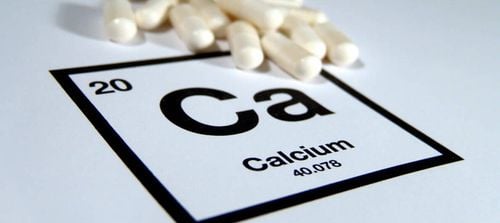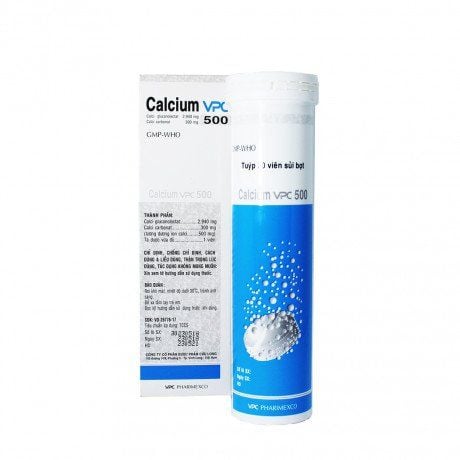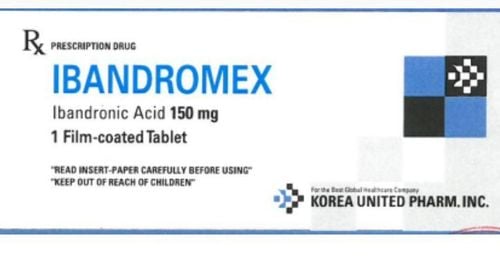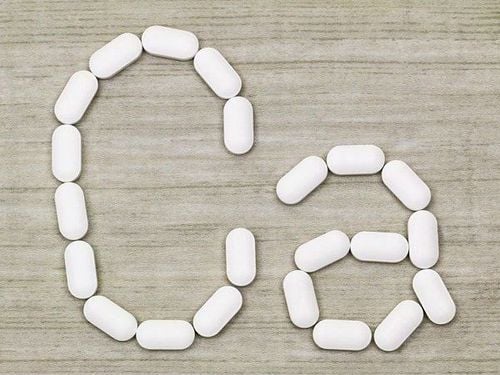This is an automatically translated article.
The article was written by Dr., Dr. Phan Nguyen Thanh Binh, Department of Pediatrics - Neonatology, Vinmec Central Park International General HospitalCalcium helps the body form strong bones and teeth, ensures nerve functions and blood clotting. Calcium deficiency causes rickets in children and osteoporosis in adults. On the contrary, too much calcium can lead to kidney stones and reduce the absorption of other essential minerals. So when to supplement calcium, how much is enough and what dose can cause harm?
1. How much calcium is enough?
The body's calcium needs change with age, depending on the development process, the life cycle of the bones and the absorption of calcium by the body. Calcium requirements are increased during periods of increased bone mass and/or bone resorption.
Bone accumulation stage: from birth to 30-35 years old.
Transition period: from 30-40 years old, there is a balance between the two processes of bone formation and bone destruction. Although not as important as in the period of bone accumulation, it is found that if the body is provided with enough calcium during this period, the degree of osteoporosis in old age will also decrease much.
Osteoporosis stage: after the age of 40, bone mass will gradually decrease from 1-3% per year, especially rapidly when women reach menopause and a person at the age of 80 will only have 50-70% of her bone mass. age 30. In addition to the natural increase in calcium requirements through the process of bone resorption, after the age of 40, the amount of calcium lost through urine and feces also increases while calcium absorption decreases, so calcium requirements at this stage are very high. high, ranked second during the life cycle.
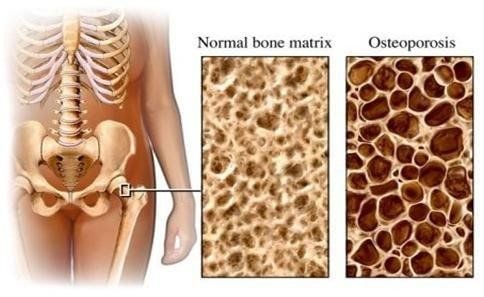
Daily calcium requirements also change with each stage as follows:
0 - 6 months old : 300mg 6 -12 months old : 400mg 1 - 2 years old : 500mg 3 - 5 years old : 600mg 6-7 years old : 650mg 8 - 9 years old : 700mg 10 - 19 years old : 1000mg 20 - 29 years old : 800mg 30 - 49 years old : 800mg 50 - 69 years old : 800mg >= 70 years old : 1000mg Pregnant women : 1200mg Lactating women : 1300mg
2. How can you best absorb calcium?
2.1. Eating large amounts of calcium or taking vitamin D supplements if dietary calcium is too low Calcium is absorbed by two mechanisms, either directly through the intestinal wall or mediated by vitamin D. If a person has dietary intake Rich in calcium, calcium will be absorbed directly into the body through the lower part of the small intestine but this process will happen optimally if we take calcium while eating (with stomach acid). calcium comes from milk (with the sugar lactose, which helps acidify the pH of the terminal small intestine) and calcium from soy (with isoflavones). However, calcium absorption can be reduced to less than 5% in the presence of oxalates (found in spinach and some beans), free fatty acids (in people with fat malabsorption), phytate in cereals and a diet high in fiber (>30g of fiber is more than 2 kg of vegetables per day).
3. How to eat enough without excess calcium?
A typical diet with 200-300g of vegetables has about 200-300mg of non-dairy calcium but the absorption is 5-10% so we will calculate the remaining 80% through milk and dairy products .
Calcium concentration of milk and dairy products
3.1 Excess calcium When calcium intake is in excess, calcium will be excreted from the body, so there are rare cases of excess calcium in the blood or in body tissues. Long-term use of high-dose calcium drugs can lead to kidney stones, high blood calcium, poor kidney function and reduced absorption of iron, zinc, magnesium, phosphorus, iodine and copper. High dose calcium when exceeding 1500mg in children under 1 year, > 2500mg in children 1-7 years old, > 3000mg in children 8-19 years old, > 2500mg in children 20-49 years old and > 2000mg when >= 50 years old.

3.2 Can kidney stones be supplemented with calcium? People with kidney stones due to calcium are still advised to drink 400-500ml of milk per day. A long-term calcium-deficient diet also increases the risk of oxalate kidney stones, high blood pressure and bowel cancer.
So, optimize the height for the children and build a strong skeleton for the members of your family by properly and sufficiently calcium supplements at each stage of development.
To protect your child's health, you should give your baby regular health check-ups to actively screen. Currently, Vinmec is providing a children's general health check-up program. In the health check-up package, your baby will have a comprehensive examination, from eyes, teeth, blood pressure, weight to necessary tests, combined with diagnostic imaging. The examination package helps you check your baby's overall health, screen for symptoms for early detection and treatment if needed.
Please dial HOTLINE for more information or register for an appointment HERE. Download MyVinmec app to make appointments faster and to manage your bookings easily.







